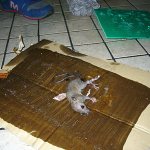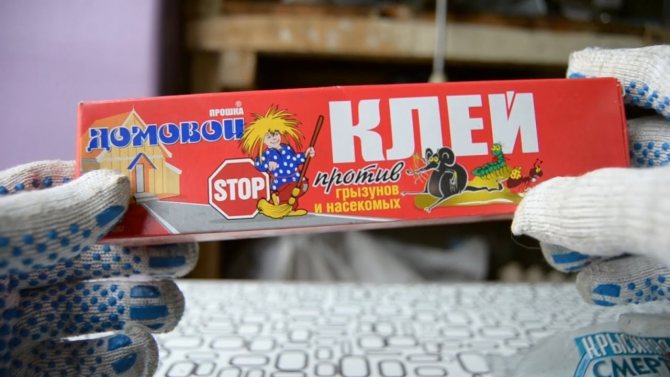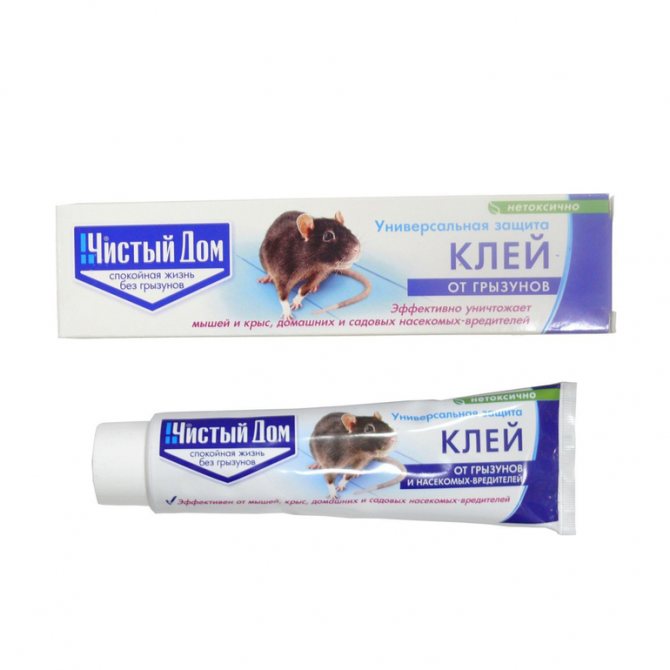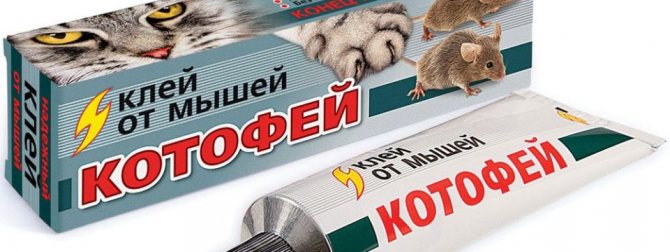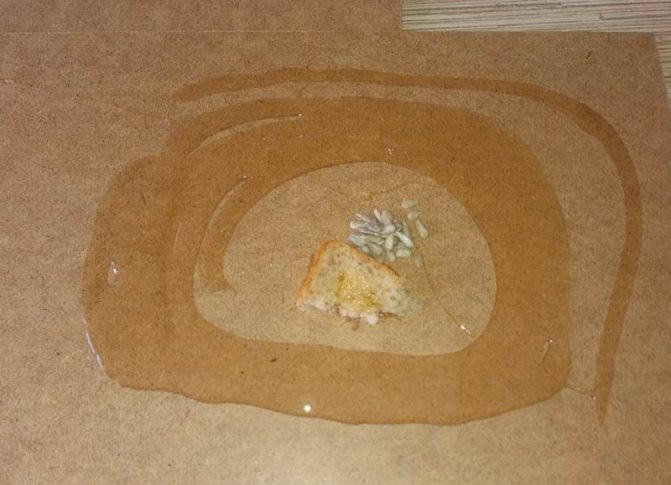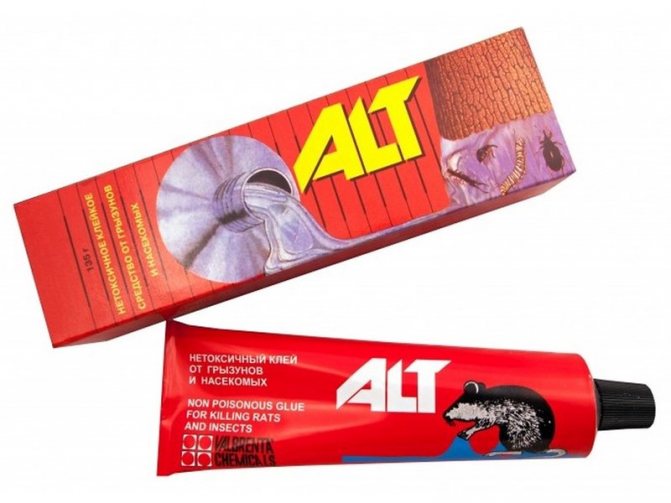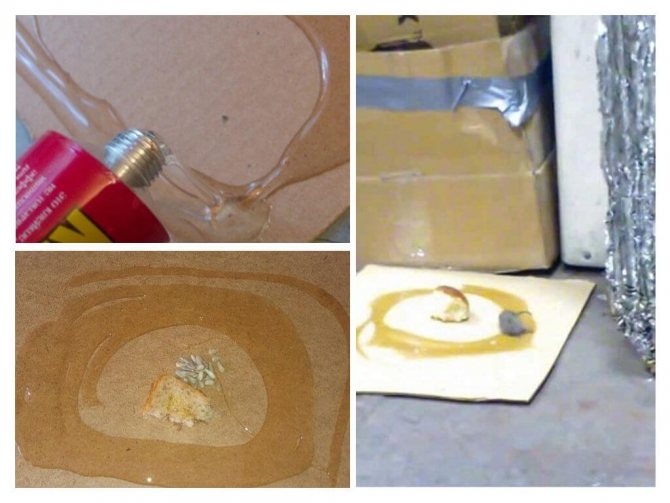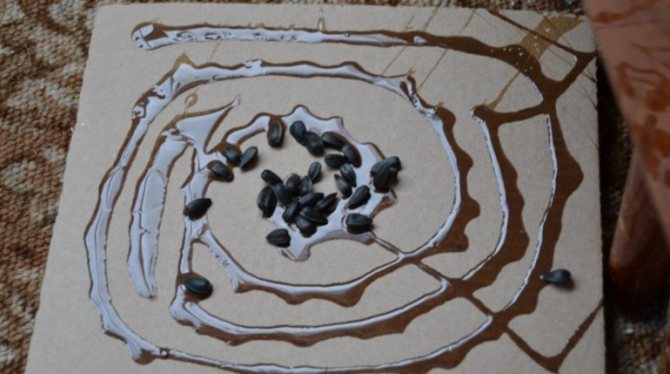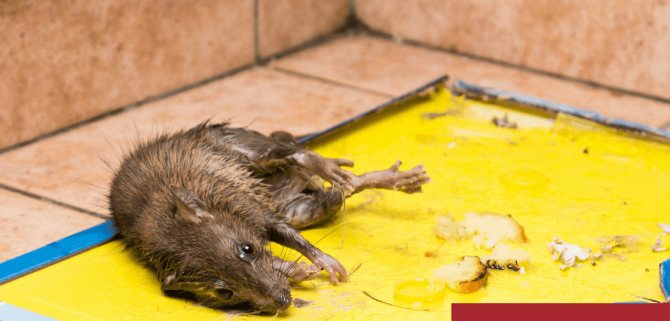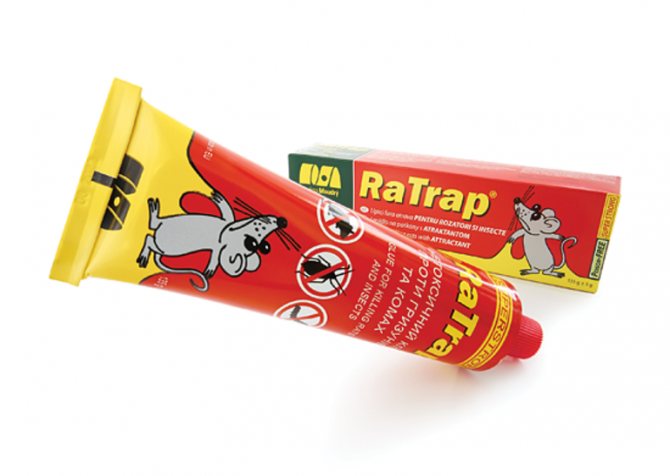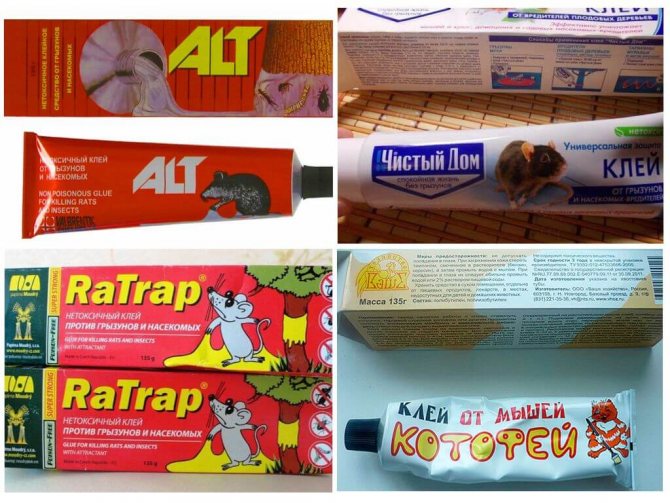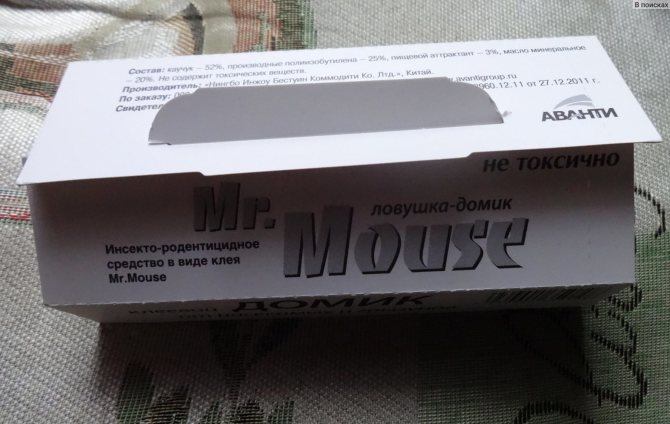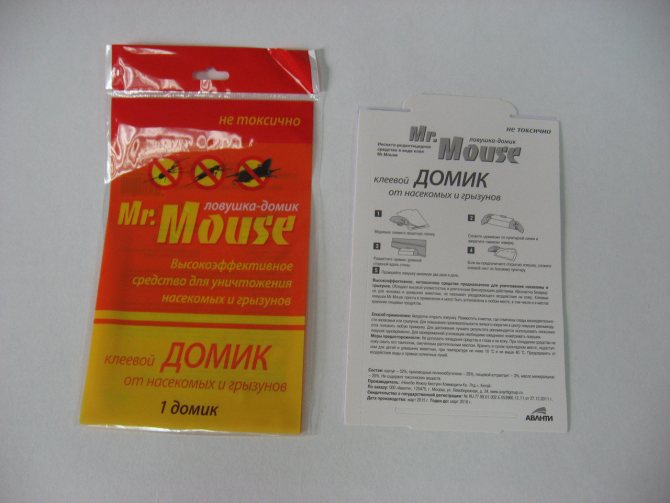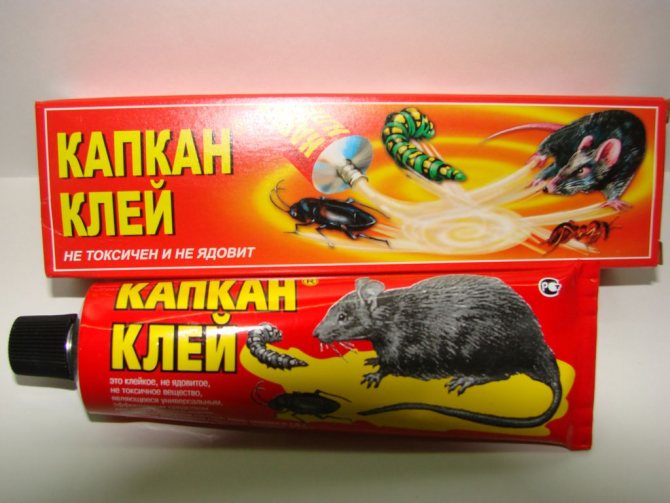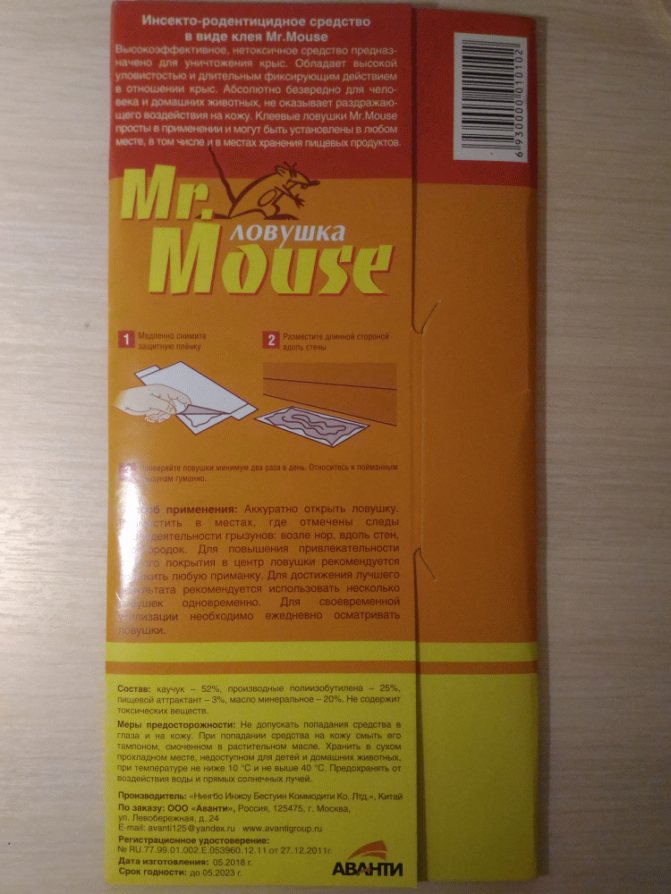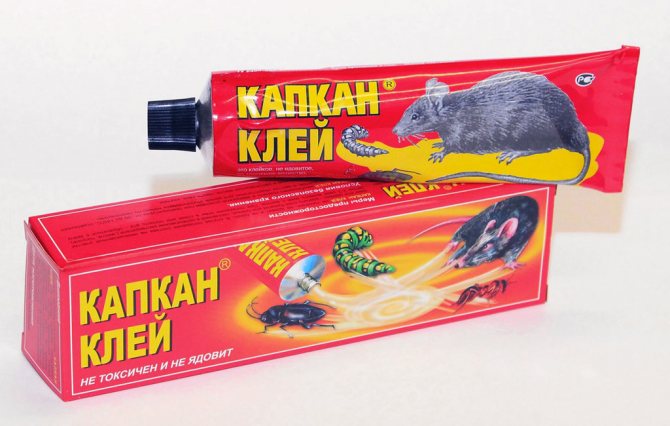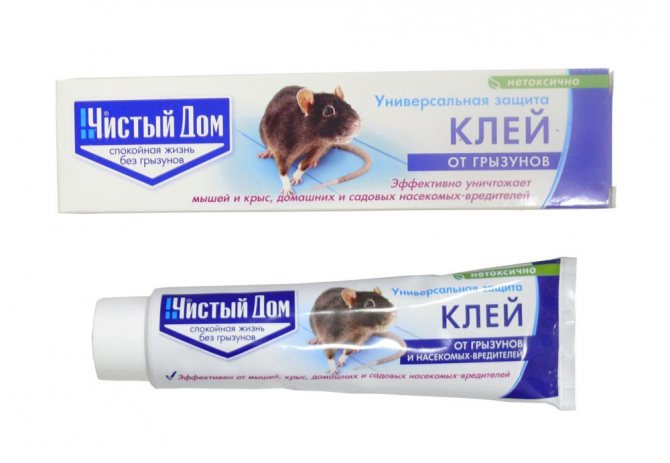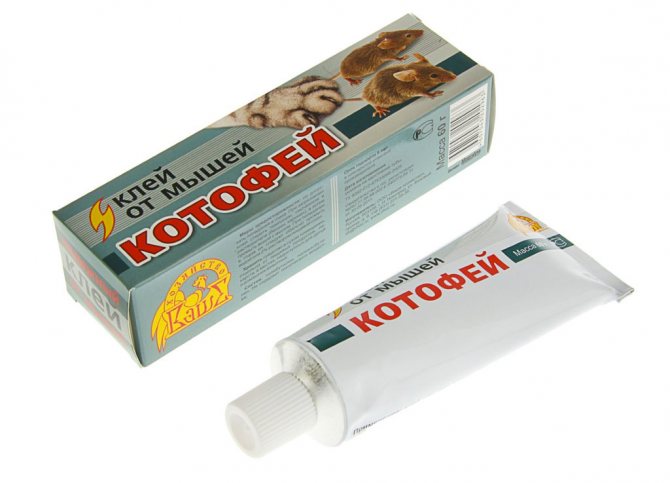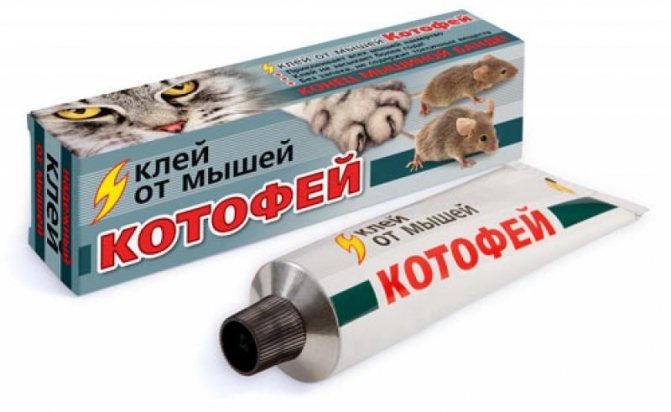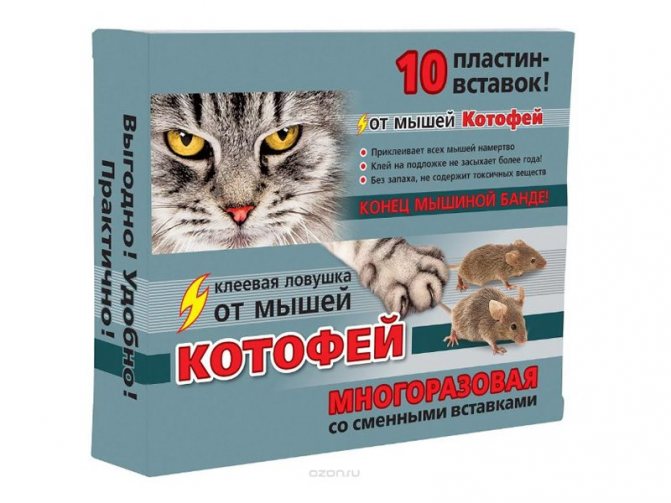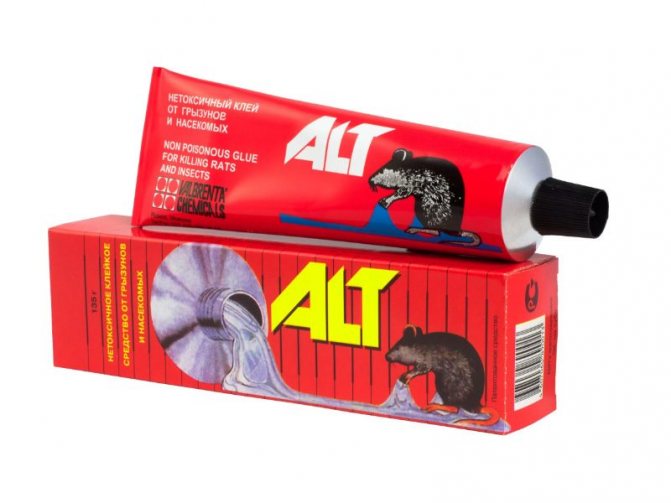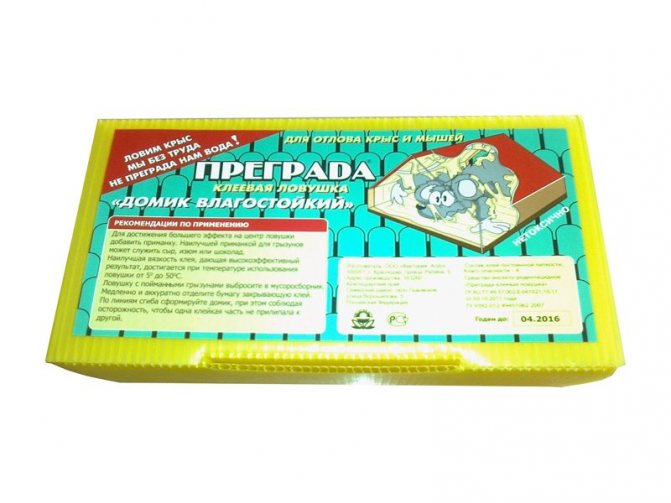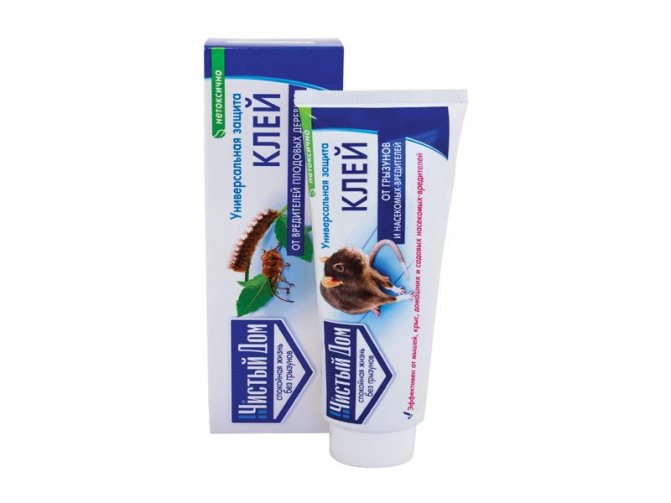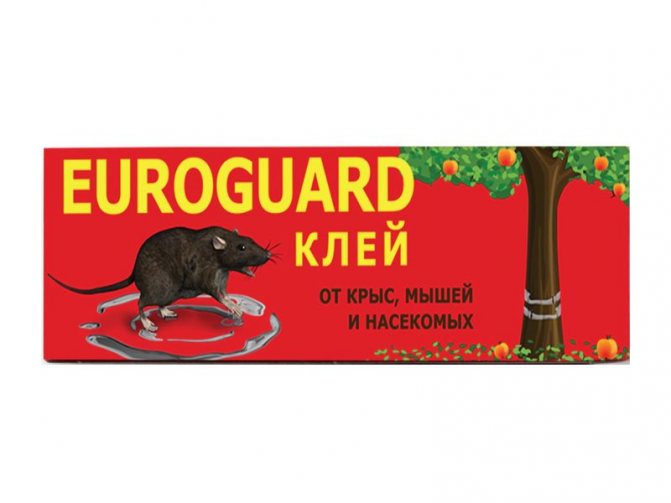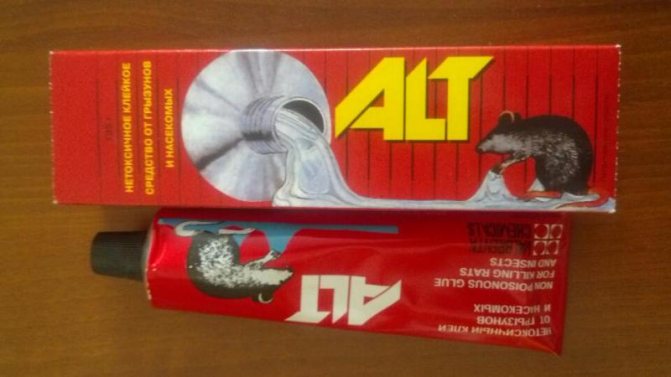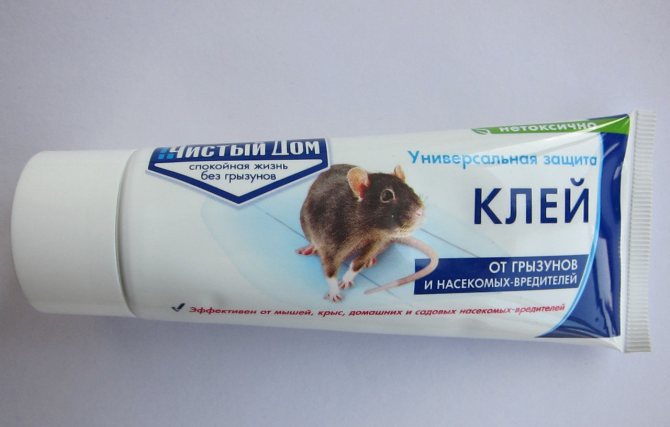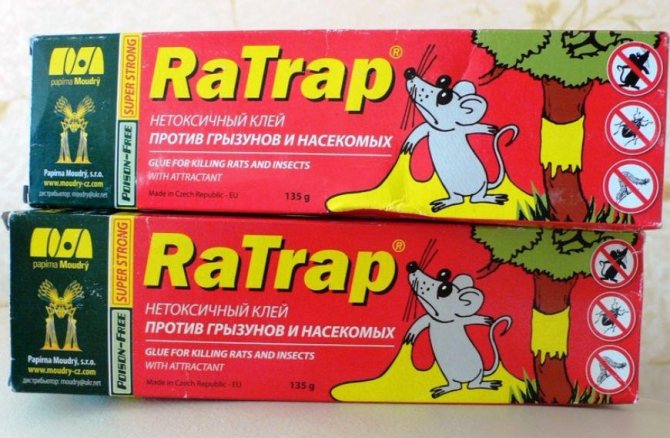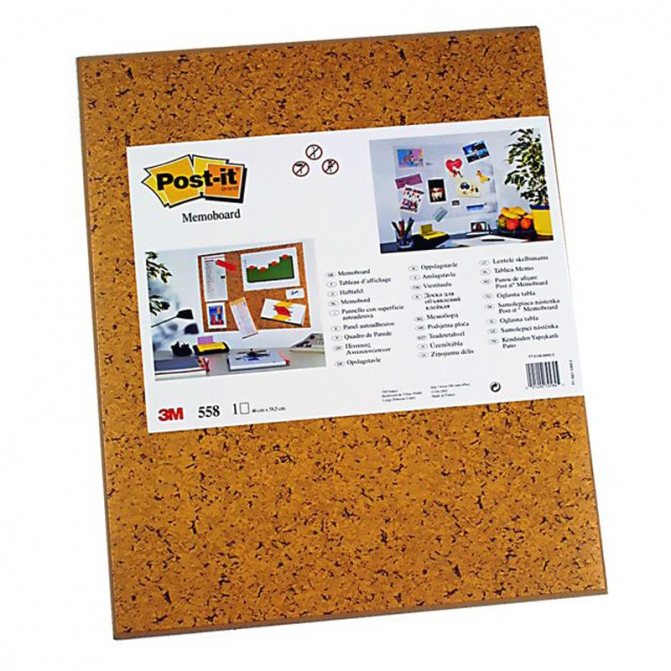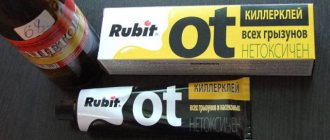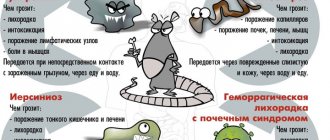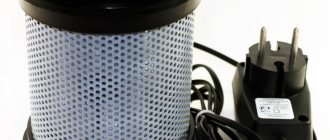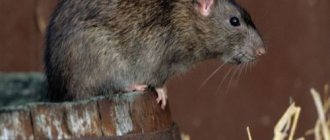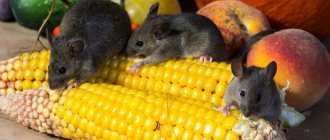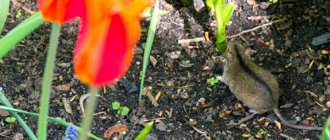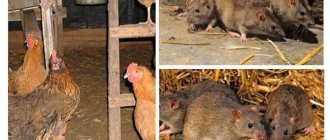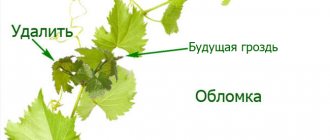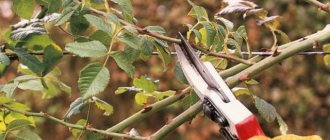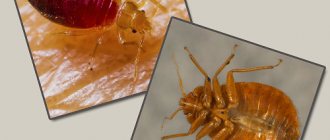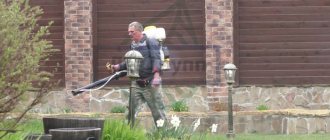Next, you will learn:
- Is the glue from rats and mice really effective in practice and what should be known in advance about the disadvantages of this agent;
- What brands of glue for rodent control are on the market today and do manufacturers add poison to the adhesive composition;
- How to use glue traps correctly and what important nuances must be taken into account in order to increase their effectiveness;
- What to do if the glue is on clothes, hair or on the pet's fur - how can you wash it off without tormenting yourself and your pet with the terrible smell of solvent;
- What else can be used against rats and mice instead of glue, if with the help of this tool it is still not possible to cope with rodents ...
Special glue for rats and mice is quite effective, but not entirely humane, since an animal stuck to a trap is doomed to a long and painful death. If we talk about reliability, then the glue is quite comparable with the well-proven mousetraps and rat traps-crushing devices, but at the same time it has specific rules of application, because of which its use in residential premises may be associated with certain difficulties.
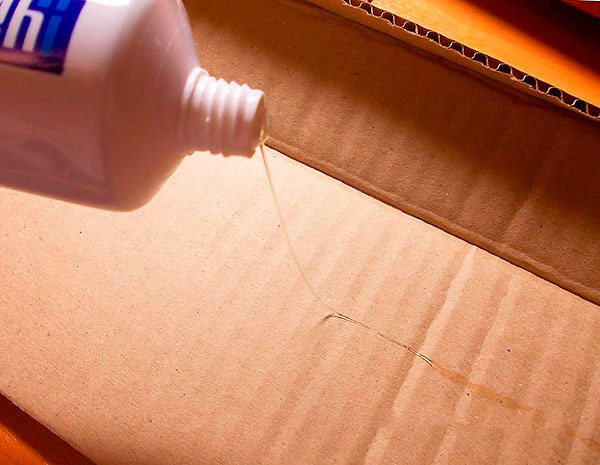
It is believed that the most popular glue for rats and mice began to acquire after the introduction of glue traps for cockroaches. Residents of apartments and private houses have found that these sticky insect traps are very easy to use, highly effective, and quite safe for people and pets.
It is not surprising that ordinary people first tried to use glue against rats and mice on their own, making home-made glue traps, and then this trend was quickly taken up by enterprising manufacturers, and specialized glue for catching rats and other rodents appeared on the market. But the fact is that mice and rats are not cockroaches, and the use of glue against them has some peculiarities, which we will talk about later.
Methods for catching mice
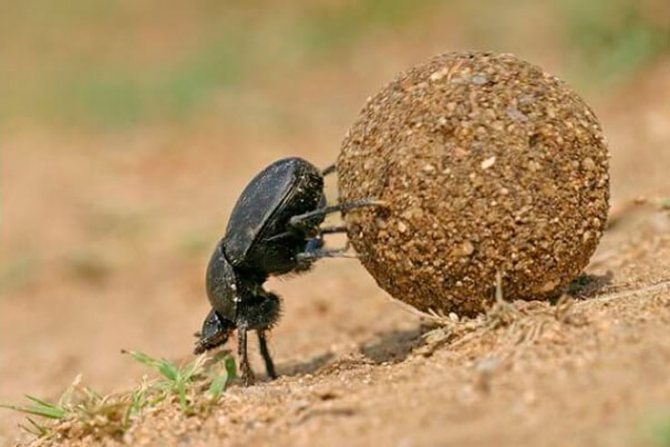

For this purpose, a number of devices have been developed that will help to significantly reduce the population of gray pests.
For example:
- Mechanical mousetraps.
- Zhivolovki.
- Containers and cages.
- Electric mousetraps.
The principle of operation of the simplest mousetrap:
- The design of the mechanical trap includes a clamping device, a trigger and a retainer. All structural elements are placed on a piece of wooden plank.
- It is best to wear gloves before setting the trap, as mice can smell human scent and will refuse the bait.
- Before installing, you need to "charge" the mousetrap by putting one of the baits described in the article on the trigger. In this case, you need to bait the bait so that the mouse has to make an effort to remove the bait from the hook.
- After that, the clamping mechanism is cocked, locking it with a retainer, which is connected to the trigger. In this case, you need to make sure that with the slightest effort, the mechanism is triggered.
- In order for everything to work out quickly and correctly, it is better to practice in advance. In this case, you need to ensure that the clamp does not hit your fingers.
- When the mousetrap is loaded and cocked, it can be set up where mice like to appear.
- It works as follows:
- The rodent, smelling the smell of the bait, tries to taste it, which acts on the trigger.
- After that, the retainer is triggered and the clamp is released, after which it is triggered and presses the rodent.
- If a larger rodent (rat) reacts to the bait, it can easily drag the mousetrap with it.
What bait is better to use
To catch a rodent, it is enough to use some, not tricky, simple, but effective devices. The main task is to lure this creature. To do this, you need to know what mice love most of all, despite the fact that they are almost omnivorous. Sometimes mice eat something that cannot be considered edible. For example, they gnaw the insulation off the wires and eat the styrofoam. There are also myths about which bait is most attractive to mice. It is believed that mice love cheese the most.
Most Acceptable Baits
The bait must have a strong, pleasant scent, or the mice will ignore it. At the same time, the product should not contain chemical components that can scare off mice. In addition, the product must be fresh. No rotten or semi-spoiled foods, such as fish, meat, sausages, seeds, cereals, are in any way suitable as bait.
Cleaning hands, furniture, floor
Effectiveness can be a serious disadvantage of the drug. Imagine if droplets of a fast-setting substance hit furniture, floors, or fabrics. How to be in this case? It is extremely difficult to clean the surfaces from the adhesive, but you can fight for cleanliness.
- Solvent. If drops of glue, despite the precautions taken, still ended up on your hands, then do not rush to get upset. Take a piece of cloth, soak it liberally in acetone, kerosene or any solvent. Wipe the contaminated skin thoroughly. Just do not forget that aggressive substances can have an extremely negative effect on the condition of the epidermis. This method is best used to clean the floor rather than the hands.
- Vegetable oil . This is a less aggressive method, but more time consuming. Soak a cotton ball in vegetable oil. Apply this "lotion" to the contaminated skin. Secure the "compress" with a bandage or piece of cloth. Wait about 20 minutes. Then wash your hands well in hot water and soap. This "compress" will help clean furniture, linoleum, plastic, glass.
Thinner, kerosene or gasoline can also save clothes. The method with vegetable oil is no less effective. But the listed funds can lead to damage to the product. In the first case, the color may fade, the fiber becomes thinner. In the second, be prepared to remove greasy stains.
If the glue gets on the hair or hair of animals, then washing with vegetable oil or aggressive solvents will not provide the desired result. The only option is to cut off the soiled strand or clump of wool.
That the rodent will definitely not eat?
It is believed that mice and rats eat absolutely anything that catches their eye. They gnaw on books, styrofoam, potatoes and other seemingly unattractive foods. But being intelligent animals, they sense that there is danger from the mousetraps. They will never get into a suspicious device for an unattractive, albeit edible, bait.
It is useless to put in a mousetrap:
- windy cheese;
- spoiled sausage and sausages;
- dried baked goods;
- chocolate;
- old lard;
- crackers;
- products with spices.
Catching rodents with mousetraps is the best alternative to poisons. A poisoned mouse can die anywhere, and it is not always easy to find it. A disgusting smell will hover in the house, corpses can be found in shoes and in food. Much better to use a baited trap. With its help, you can overfit about 20 mice in just a day. The key is to use the right product. Take advantage of our list of baits. Change them periodically, as well as move the mousetraps themselves. Although rodents are smart, the most cunning and dangerous animal on earth is humans.
DIY mousetrap
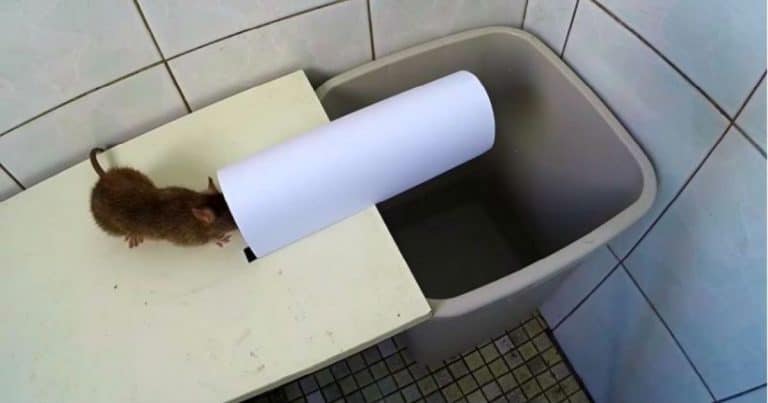

With your own hands, from the available, sometimes unnecessary materials, you can make several useful structures. To make a trap you will need:
- Bucket with water.
- A piece of paper, a cover from a school notebook, or a desk calendar.
- A bait with an attractive scent.
How is it done:
- The bucket is filled with water about 1/3 of the capacity.
- After that, the bucket is placed next to the table.
- A construction is being made that resembles a paper house.
- The house is installed on the edge of the table so that one edge is on the table, and the other is located above the bucket of water.
- The bait is placed on the edge of the house, which is above the bucket.
- When the mouse tries to take the bait, it will simply fall off the table into a bucket of water.
Device options
Human ingenuity has no boundaries. Look around. You are surrounded by many items that can serve as the basis for making an effective trap. So, arm yourself with the tools at hand and start tinkering with the following seven ideas.
With an elastic band for notes
Features. A crafted mousetrap will allow you to catch only one rodent. Place the device near the intended burrow. The animal is attracted by the aroma of the bait. He runs into the bottle, pulls the fixed food. The paper clip easily slips through the hole. The thread comes off the straight end. The neck of the bottle, which is no longer held by anything, slams shut. The mouse is trapped.
- a 2 liter plastic bottle with a lid (it is better to take a square one) - one;
- elastic band for money - two;
- thin stick - two;
- strong thread - 30-40 cm long;
- bait - one;
- metal clip - one.
- Step back from the neck about 15-20 cm (one third), make an incision with a sharp knife, moving in a transverse direction.
- Do not cut all the way; leave one of the four sides intact if your bottle is square. You should have a convertible neck box.
- Place the workpiece with the uncut side on top.
- Heat the awl over the fire.
- Make them through holes in the cone-shaped workpiece at the bottom, 5-7 cm away from the cut.
- Insert one of the sticks into the holes obtained.
- Repeat the procedure for punching holes in the larger workpiece, backing away from the first holes by the length of the elastic.
- Insert a second stick into these holes.
- On one side and the other of the bottle, put rubber bands on the ends of the sticks.
- Now take a strong thread, tie it with one end to the neck of the bottle.
- Be sure to tighten the neck with a lid, otherwise your "captive" will easily come out through the hole.
- If you did everything correctly, then by pulling the thread, you can open your "chest".
- Unfold the metal paperclip.
- Make a ring from one part, put the bait in it, fix it tightly.
- Leave the other end of the paper clip straight.
- Make another hole in the base of the bottle with a hot awl.
- Insert a paperclip into this hole so that the bait is inside the bottle, and the straight end goes out.
- Tie the free end of the thread to it.
- Pull the rope so that the neck of the bottle opens 90º.
Nail and thread
Features. The mouse, attracted by the bait, will make its way into the bottle. She, under the force of gravity, will topple down, but will not fall to the floor, but will hang in the air with the captive.
- plastic bottle (1.5 l or 2 l) - one;
- the nail is one;
- thread - 20-30 cm long;
- the bait is one.
- Cut off the neck of the plastic bottle.
- Step back from the cut 1-2 cm, make a hole with a hot awl.
- Pass the end of the thread into this hole, tie it tightly.
- Put the bait in the bottle at the very end.
- Place the homemade mousetrap on the table so that part of the bottle (the one in which the bait lies) remains suspended.
- Tie the other end of the thread to a fixed nail.
What bait is better to put in a mousetrap
Before you start catching, you should decide what mice love, get acquainted with their taste preferences. If food is not of interest to them, then the trap will remain empty. Not every treat can be used as a trap.
In addition to taste, attention should be paid to the consistency of the product.
It is important that it is tight. Then, if the mouse pulls the lever, the trap will slam shut
Then, if the mouse pulls the lever, the trap will slam shut.
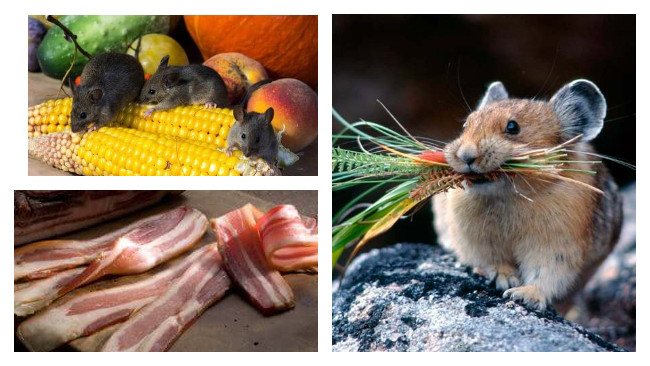

Salted or smoked bacon
Lard is considered an effective bait for mice. They love the smoked product. To trap an animal, a small piece of bacon should be placed in the trap. To enhance its taste, it is better to fry it over an open fire.
You should put lard with streaks of meat in the mousetrap. A piece of white bacon does not emit a special smell, therefore it does not attract a pest with its taste. In order not to doubt that the trap will not work and he will run away, you can treat the product with a special poison. Then the animal will die from poisoning.
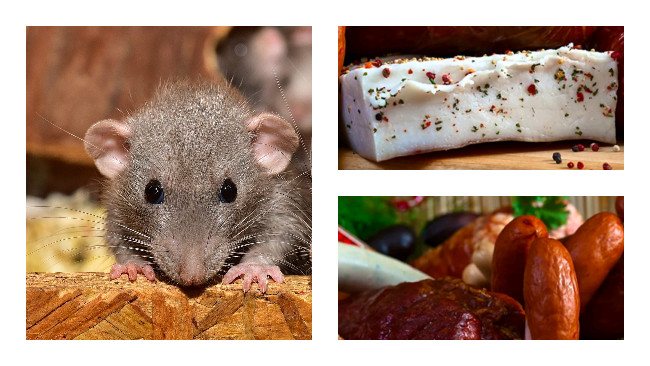

Vegetable oil
Sunflower oil attracts rodents with its aroma. Of course, it will not work in its pure form to lure mice into a mousetrap. Therefore, the product is used for processing, for example, a slice of white bread.
Grain and baked goods
Freshly baked pastries are very flavorful. The rodent also loves her and comes to smell. If you add bran, seeds, then the efficiency of using baked goods for catching pests increases.
Often the following types of whole grains are poured for profit:
- wheat;
- barley;
- buckwheat;
- fig.
Advice! To enhance the aroma, fresh baked goods should be treated with vegetable oil, preferably sesame oil.
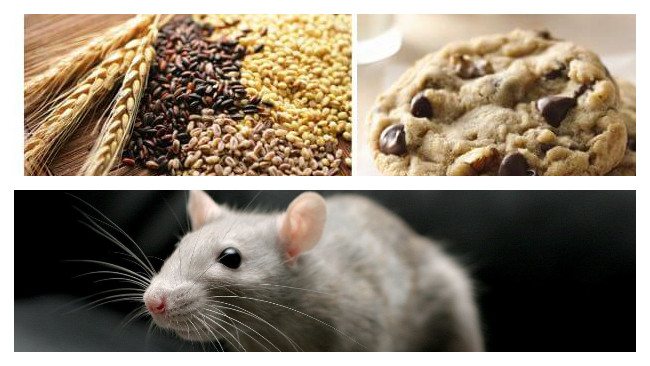

Cold smoked fish
Any smoked meats attract pests with their aroma. Fish is no exception. It is more convenient to use a cold smoked product for bait, since it has a dense consistency, it will hold on tightly in a trap.
Only fresh fish should be used as bait. Poor-quality, old, unusable food will be bypassed by rats.
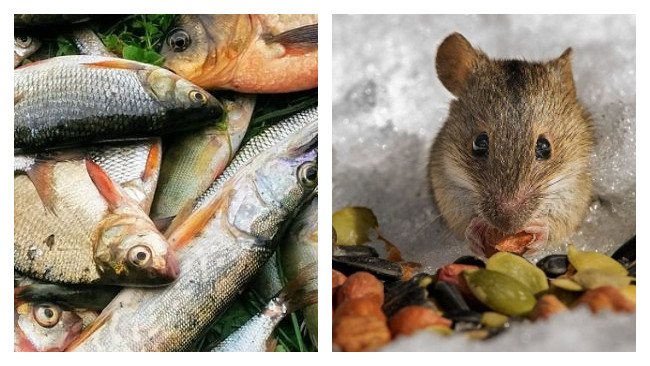

Sausage
Sausage is rarely used as bait for small rodents. Because this product contains many chemicals that the pest senses. If nothing else is at hand, you can use a piece of sausage.
It is better to pay attention to raw or smoked products. Rats respond well to homemade sausage
Catching them for cheap types of meat products is pointless. Animals don't like them for their smell.
Cheese
The belief that rodents like cheese is considered a misconception. These animals are indifferent to him. They don't like fermented milk products
Mice will pay attention to this bait if there are no other, more delicious foods nearby.
The exception is smoked sausage cheese, which attracts pests with its characteristic smell. You can make it more flavorful by mixing with sesame oil. Regular cheese dries up quickly and attracts little rats.
Raw minced meat with onions
The raw minced meat option is more suitable for rats. Since they are carnivores, they feed on meat. But mice will not bypass him either. It is recommended to add onions to attract rodents to enhance the aroma. The main thing is to observe the measure.
If there are animals and children in the house, then pesticides are prohibited.
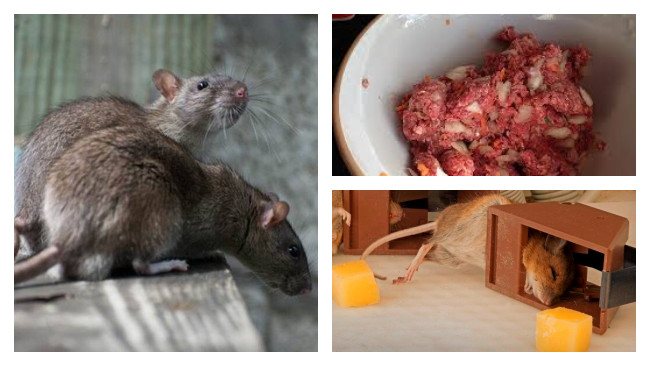

Popular glue traps
A little need to touch on the effectiveness of this method of fighting rodents, as well as find out which traps are the most effective: homemade or purchased? Despite its simplicity and ingenuity, the glue does not have a high performance. Firstly, it is suitable for fighting single mice. Second, these intelligent animals quickly learn to detect and bypass rat sticky devices.
One of the most important properties is the absence of its own distinctive smell.This is why a homemade glue mouse trap is often ineffective as it can be easily remembered due to its smell.
In addition, most common building materials are not suitable for making a gummy device for rats due to their rapid drying and oxygen degradation.
It is more effective to use sticky traps in conjunction with other anti-mice tools. In particular, it is recommended to put not cereals near it, but poison. Then the animal, thinking that it has outwitted the owner, sneaking to the "poop" past the sticky device for mice, dies from the action of toxins.
Rodentoff
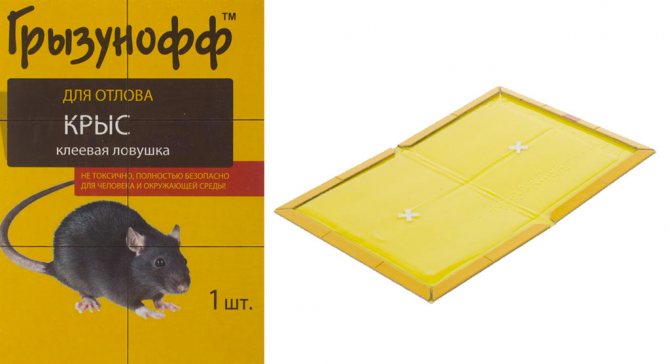

"Rodent" is a rat and other small pest control plate designed to kill small animals. One of the important advantages is a rather thin sheet, which is why it does not stand out much on the floor. The substance retains its properties at temperatures from 5 to 30 ° C. One trap is placed on a room of 10-30 m2.
It is advisable to put 10-20 grams of cereal or other bait in the center of the Gryzunoff glue trap. Details can be found in the instructions for use. The glue is non-toxic and safe for humans, but it can also glue a small pet. "Gryzunoff" is one of the cheapest remedies for parasites.
Feedback. Roman, Moscow:
The most important thing is the speed of solving the problem. And the fact that the creature will fall into a trap is 100%, you just need to choose the right place to install the plate. "Gryzunoff" is odorless, easy to use (just remove the film). He glues the rat tightly.
Mr. Mouse
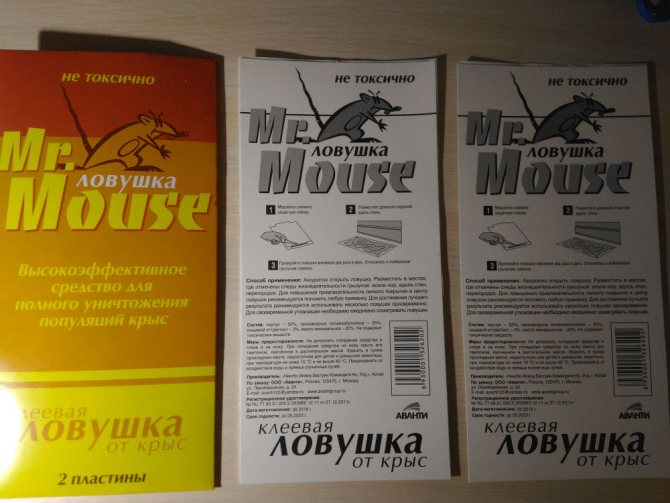

Buy
Mr. Mouse is a glue trap based on the glue of the same name. The platform has dimensions of 20 by 15 cm and is designed for 1-3 animals. Tubes of rodent glue Mr. Mouse 135 g each, with which you can make several traps. 15-20 grams of substance is enough for one sheet of cardboard.
Mr. Mouse is a glue trap from rats that does not have any toxic substances in its composition. The main component is polyisobutylene, which gives the adhesive properties. The plate also contains rubber (rubber), food attractant, mineral oils. "Mr Mouse" is often bought to kill insects. With which she copes quite successfully.
Feedback. Alexander Viktorovich, Chelyabinsk:
High quality European glue. He can be trusted to protect your home from parasites. It is not the first time that rats appear at our dacha. Every time we resort to this remedy, and it always catches the parasite pretty quickly.
Foresight
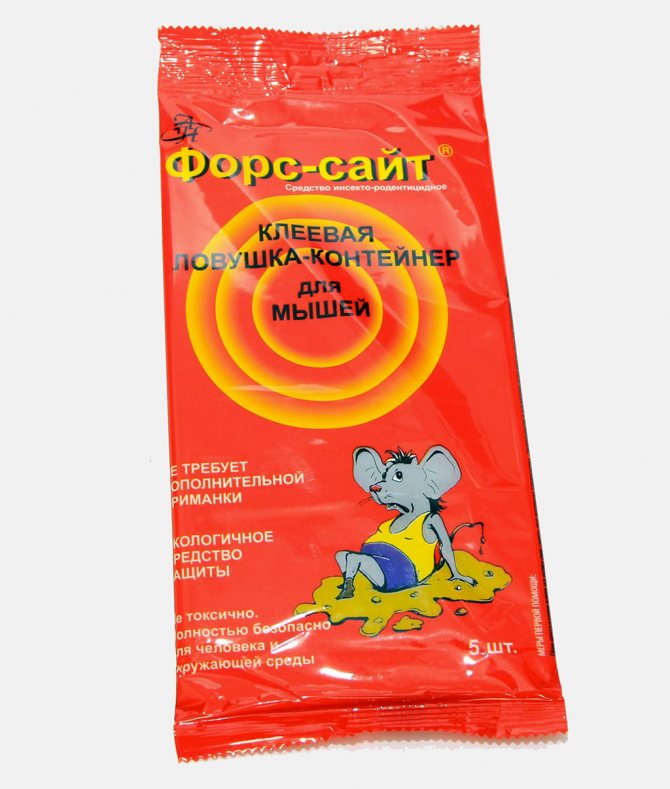

"Forsyth" is a glue trap for rodents with an attractive smell for them. The plate is not poisonous, therefore it is safe for small children. The adhesive layer has a colorless or slightly yellowish tint. "Foresight" is suitable for catching and exterminating cockroaches and other insects. It is used at a positive temperature not higher than 30 degrees. Shelf life is 4 years.
Due to the low degree of danger to humans, it is recommended to use it in child care facilities, hospitals, food industries, clinics and other public places. For use, it is enough to remove the sheet and remove the protective film. To increase efficiency, you need to put bait on the sheet.
"Foresight" is placed where there were signs of the appearance of an animal. Before that, it is advisable to remove all kinds of debris so that foreign objects do not stick to the surface. Foresight is checked the next day or every other day. If the mammal has not adhered immediately, then the plates should be inspected once a week.
Feedback. Sergey, Barnaul:
When the mice appeared, they first tasted the poison. But apparently the animals were taught by the harsh truth of life, that is, it did not help. Later we acquired Forsyth. I do not know how many of these parasites we had, but for 4 pieces we caught 5 rodents, after which they did not appear. Perhaps everyone was overfished, or maybe they decided to go to a safer place.
Block
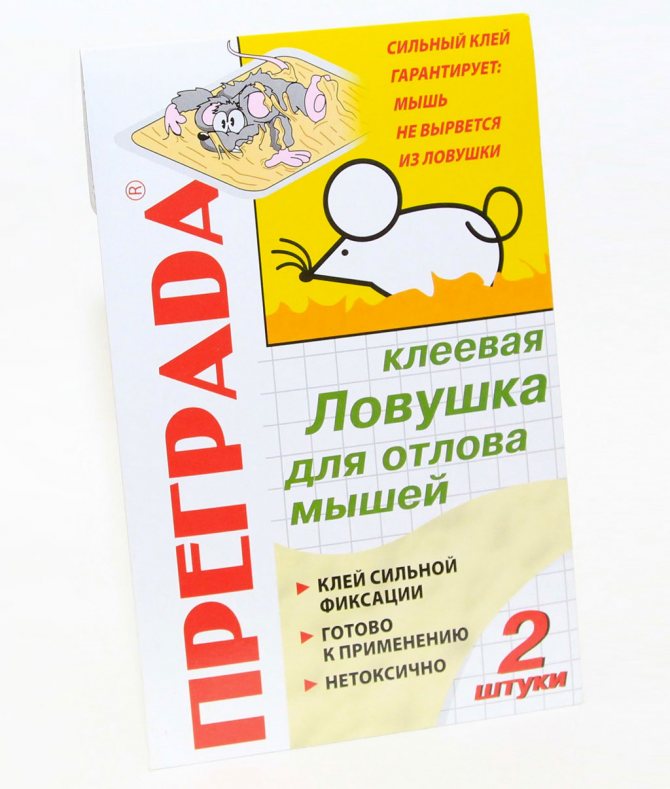

The "Obgrada" glue trap for mice is a flat cardboard measuring 14 by 29 cm or 14 by 22 cm. The main sticky substance is polyisobutylene, which is non-toxic and does not have a strong odor. The composition includes food attractant and rubber. Everything is diluted with mineral oil so that the mass does not come out dry.
The plate is ready to use. To do this, you need to get it out of the box and remove the protective layer. It should be placed where there are regular signs of the presence of rats, where there is no possibility of contamination of the "Barrier" with foreign debris. The room should not be dusty or humid. It is advisable to put your favorite treat of the animal in the tool for catching mice.
You can increase the effectiveness of the glue from rats if you remove other food so that all animals go exactly to the "Barrier". The room temperature should not exceed 50 degrees and fall below + 5 ° C. In this case, one sheet must be placed on an area of no more than 20 m2. It is recommended to use as many traps as possible.
Feedback. Nikolay, Novosibirsk:
In my country house rodents appear regularly. Previously I used mousetraps, but over time I began to notice that the parasites got used to it and learned to bypass them. However, when placing three sticky "Barriers" I caught 8 animals at once. As a result, they have not been seen or heard for six months. I sit and rejoice.
Food traps
There are ready-made traps on sale with bait inside. This is a great option for those who don't want to mess with DIY cooking. The poison acts only on pests. It is absolutely safe, so an accidentally eaten bait will not harm pets.
The trap mechanism is designed so that it is designed only for rodents. The bait can be changed, it is suitable for multiple use. At the same time, the smell does not become less intense. The trap comes with a spare bait. Therefore, if the mouse dies in the trap, having eaten all the food, you can put a new one. Its properties remain active for a whole year.
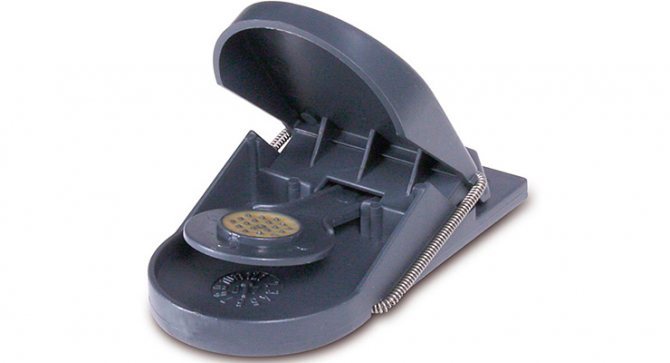

Traps with bait do not require you to prepare the bait yourself, since it is already there in advance
The following firms have proven themselves well:
- Swissinno;
- Supercat.
Advantages and disadvantages
Like all pest control tools, mouse glue has both positive and negative sides.
The undoubted advantages of rat glue are:
- ease of use;
- long term of validity;
- lack of smell;
- lack of poisonous vapors;
- low cost.
The disadvantages of a glue trap for rats include the following factors:
- if handled carelessly, the anti-mouse glue can get on the hands and floor, and it is difficult to remove it;
- you may find the victim still alive and squeaking loudly;
- a pet can fall into the trap.
What about cheese?
No way! Let the person feast on them. The long-term experience of small pest hunters has proven more than once that cheese is not what mice in a mousetrap love!
Of course, it is not forbidden to use it, but no one guarantees the effectiveness of fishing. Even scientists claim that mice are indifferent to cheese. According to them, the diet of rodents increasingly consists of plant foods, so ready-made sour-milk products do not appeal to them.
A group of English enthusiasts from the British Sanitary Service undertook to refute this statement. For some time they put three mousetraps at equal distances from each other, loaded with cheese, apple and chocolate. Surprisingly, more than 20 mice were caught on cheese, only one on chocolate, and no one wanted to eat an apple. Draw your own conclusions!
And in conclusion: what to catch mice in a mousetrap with?
Therefore, it is necessary to choose the most fragrant and freshest products, the smell of which will reach the mouse's nose in whatever hidden corner it is.
How to dispose of caught rodents
Many people wonder how to dispose of caught rodents? A common solution is to just throw it away. There is no need to wait for the creature to die, since the smell thinning from the corpse will not only turn out to be extremely unpleasant, but also difficult to remove. But remember that a newly bonded animal can be aggressive.
Before disposing of the animal, it is advisable to put it in several plastic bags until it is completely sealed. First, the rodent will die faster from lack of oxygen. Secondly, there will be a guarantee that no one will eat it. The latter is really important, because these animals are carriers of many diseases.
Treats of animal origin
Mice living in the city, unlike their vole sisters, are omnivores and willingly eat animal food.
Fat
A small piece of bacon is the leader among mouse lures. To enhance its attractiveness, one edge of it is fried on a burning match - the smell becomes stupefying. You cannot use old bacon or take a rancid piece: pests will not lead to such a thing.
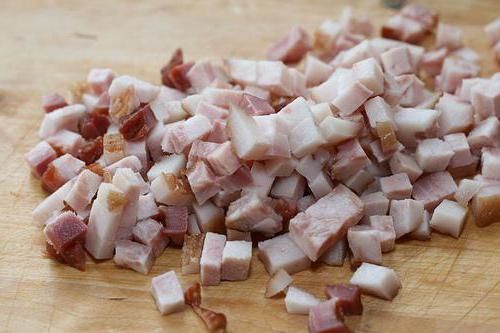

Sausages
Modern sausage is not such a suitable option for rodents, because, unlike humans, they have not learned to eat food stuffed with artificial additives. If there is a desire to equip a mousetrap with a circle of sausage, then you need a high quality product, as free as possible from chemistry.
Minced meat
Crumbled or finely chopped beef, pork, fish are the coveted food of rodents. You can take boiled meat for baits. Poison is also prepared on the basis of meat: the strong aroma and taste of minced meat reliably masks the weak chemical smell of the poisonous agent.
Using minced meat as bait also helps catch rats.
If a delicacy has lain in a trap for two or three days to no avail, then it is useless to keep it there any longer. The bait must be replaced. Even food that can lure rodents should be renewed every two days in order to enhance its flavor.
What do mice eat
The widespread belief that rodents love cheese is just a myth. Mice eat cheese if no other food is available. Then the animal will enjoy this fragrant bait, but it will not run into a trap or mousetrap-cage.
In nature, mice eat plant foods and give preference to cereals. And rats do not mind eating food of animal origin. The diet of these rodents includes eggs and meat. Therefore, it is easier to lure a mouse into a mousetrap with grain, and a rat with a piece of minced meat.
Mice in nature prefer rice and oats. A domestic pest living next to a person can gnaw on various objects:
But you need to catch mice for dairy products, delicious bread, apples, nuts. The main thing is that they have a bright aroma. Then the mammal will not be able to resist the delicacy and will stick its curious nose into the trap.
What will not work as bait
Rodent Bait Mice are not as smart as rats, but they are careful too. The rodent will keep away from someone else's object, even if there is something edible there
Therefore, not every bait will be able to catch mice:
- Do not place old food in the trap. They smell bad and will not seduce the animal.
- Do not use cheese. It has been proven that mice eat this product only when they are severely hungry.
- Make the bait flavorful. Fry seeds and nuts, mix bread or flour with fragrant butter.
The type of bait also depends on the type of device. If a tunnel is used, then you should not put a delicacy with a weak amber (fruits, crackers, grains) there. The smell of food must be strong in order to escape the trap and lure the mouse. A charred piece of bacon or a crust of bread with unrefined sunflower oil will do.
Do not put "chemical" baits in the mousetrap. Sausage, smoked fish and meat smell strong, but the animal will not be attracted. They were made using additives that mice do not eat.
How to remove from fabric and carpet
If the adhesive gets on your clothes or carpet, you can use the above-mentioned sunflower oil. However, this product has a serious disadvantage: the oil leaves greasy stains. You can wash them with dishwashing detergent, but this method is not always suitable.
The second option is special solvents, but because of them, the material may suffer (fibers will collapse) or fade. This is worth remembering when choosing how to wash the mouse glue.
Another option is to use dry cleaning services.
Preventive measures
Mice appear in human dwellings for a number of reasons. Often, the owners are to blame for this themselves, not paying due attention to the technical condition of the house or apartment, although mice can appear through open doors. The presence of cracks and holes makes it easy for any rodent to enter the dwelling, but here it is warm and there is always something to profit from. Therefore, such owners always complain about the presence of rodents, which do not allow them to sleep at night.
To understand the cause of this problem, you will have to pass the test, which is described at the beginning of the article. If, as a result of the answers to the questions, it was possible to score a certain number of points, which indicates an affirmative answer "Yes", then it is necessary to immediately correct the situation. It is necessary to strive to ensure that there are no positive answers at all, then you will not have to meet with rodents. Of course, it will not be possible to fulfill all the conditions, but those that depend solely on the owners are quite real.
Naturally, it is better to take care in advance so that rodents do not enter the dwelling. There is not much to do for this. It is enough to check the apartment or house for factors that allow rodents to enter the premises. If such conditions exist, then they need to be eliminated. You may have to do some cosmetic repairs to the apartment to get rid of holes and crevices. At the same time, you need to take care that food is stored so that mice do not get to them. You should not stock up on bulk food for the long term, clogging pantries with them. As a rule, little remains of such products.
If it so happened that the rodents entered the dwelling, then one should not hesitate to get rid of them. It is enough to make a simple trap and use a fragrant bait and the problem can be solved. The sooner this happens, the better, until the rodents manage to build a nest and begin to breed, then it is much more difficult to deal with them.
Various traps are most popular with pest controllers. They are easy to follow and can be positioned in any secluded area. But just like that, the animal will not climb into the device. Mouse trap mouse bait should be used. Only in this case will it be possible to deal with the rodent.
Mummifying substance
Not everyone is ready to constantly load mousetraps, and then remove corpses from them. In this case, it is worth purchasing special bags.
They are very easy to use. They are put in the right place where mice like to walk.
The poison is packed in packages. The main advantage of the product over analogues is the absence of a cadaveric smell after the death of rodents: the substances that make up the poison make a mummy from the corpse. The company that produces the miracle poison is called Intavir. Its products are capable of killing a large number of pests in huge areas. The poison is resistant to temperature extremes and high humidity.
In hardware stores, there is a large selection of baits for every wallet. If you don't want to cook dinner for uninvited pests, you can purchase an equally effective remedy. You need to use it strictly according to the instructions so as not to harm yourself and achieve maximum results.
Is it dangerous for pets
Since there are no components that are poisonous for pets in the composition of the product, it can be used in dwellings where there are dogs, cats and other animals.But animals are not immune from stepping on traps in the process of moving around the house.
To prevent this, traps with an adhesive base are best placed in places inaccessible to pets, or cover them on top with a coarse mesh curved in the shape of a dome. To prevent hamsters or guinea pigs from sticking to the glue, it is advised not to let them walk around the room for a certain time.
No. 5. Sausage.
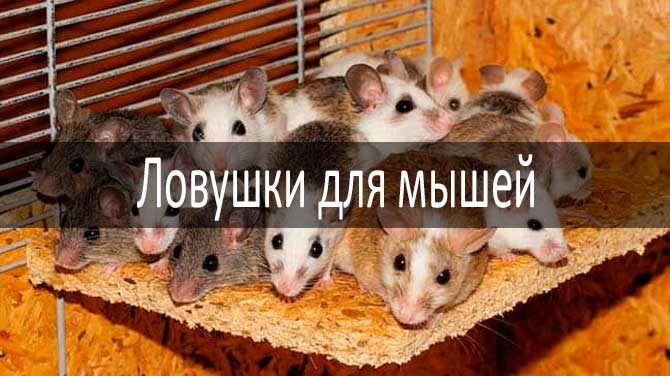

Smoked sausage closes our top list of products for traps. It attracts mice less than oil or lard, but is also quite useful for trapping them. Much better sausage results are obtained when catching rats.
Why you need to change baits.
If there are a lot of mice in the house or apartment, then it makes sense to periodically change the bait in the traps, because over time, rodents will begin to ignore such places. Also, such a small experiment will help you determine which product is best attracting mice in your case.
Let's sum up
I will note from my own many years of experience, living in a small town in the private sector, I made
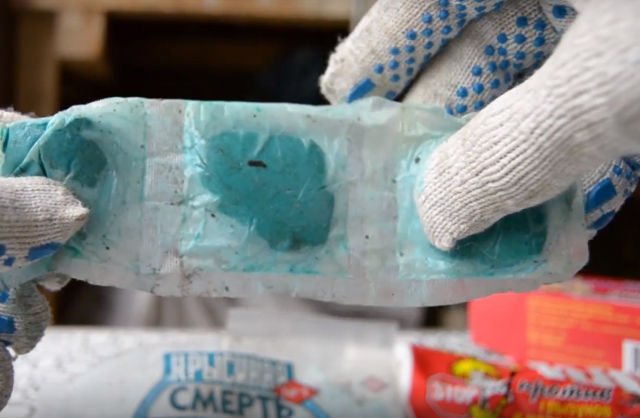

sad conclusion. A lot of our pets die precisely because of the poison. Average life expectancy is about 2 years.
Animals can be saved, but the poisons don't go unnoticed. If in the future let it take its course, then over time, death is still inevitable.
Monitor their well-being and do not forget about it, The main action of poisons is the destruction of cells and hemorrhage in all organs. Therefore, use an antidote immediately.
Conclusion - glue for catching rats is suitable for making effective traps. Due to its safety for the human body, it is chosen more often than poison. The choice of ready-made fixtures or adhesive depends on the size of the room and the number of pests.
Features of catching rodents
The first thing to consider when catching rodents is that the approach to mice and rats is different. Seeing gnawed bread, a pack of cereals or finding excrement, it is impossible to understand which enemy you are dealing with. It can be either a mouse or a rat. The first one is easier to catch.
- Mice are quite indiscriminate in their food, they love all the foods listed above, as well as fruits, pastries and sweets.
- Rats are more cunning and selective. It is best to catch them with sausage, bacon, or fresh minced meat with onions. It is recommended to put the rat trap on the bottom of the bucket. These rodents got used to pulling out the bait, sharply pulling it to the side. In a bucket where space is limited, this number will not work.
Among other things, when choosing a bait, you should start from the design of the trap:
- If there is a hook in it, then you must use a dense product (bacon, sausage). The animal must by all means pull the bait. In this case, she will dine with seeds and nuts in the mousetrap and safely escape.
- If the trap is triggered by the weight of a rodent and it only needs to get into it, you can use all of the above baits.
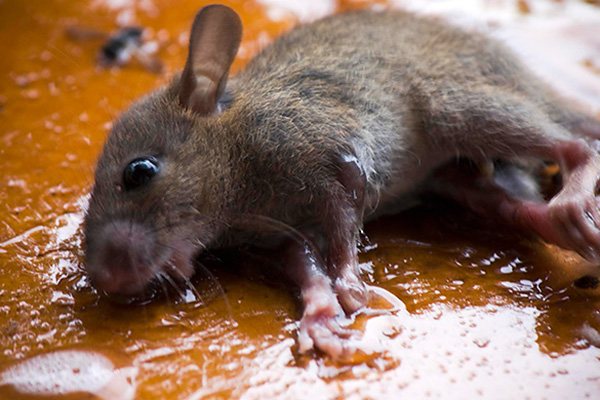

Catching mice with glue
In addition to mousetraps, there are so-called sticky traps. They come in the form of a "book" coated with a very sticky substance.
Or you can buy glue for catching mice and rats separately. It is independently applied to A4 sheets or cardboard. It is very simple to catch rodents with glue: as soon as the mouse steps on the cardboard with one paw, it will never unhook from it. For this, the trap is placed on the path of movement of pests - along the walls, under the refrigerator.
It is not necessary to use the bait in the glue trap. But if you want, it is better to put in the center of the sheet something that does not deteriorate for a long time - lard, a crust of bread and butter. Putting an apple or sausage there, you will soon regret it: they will deteriorate on the second day, and it is not so easy to take them out and not get dirty with glue.
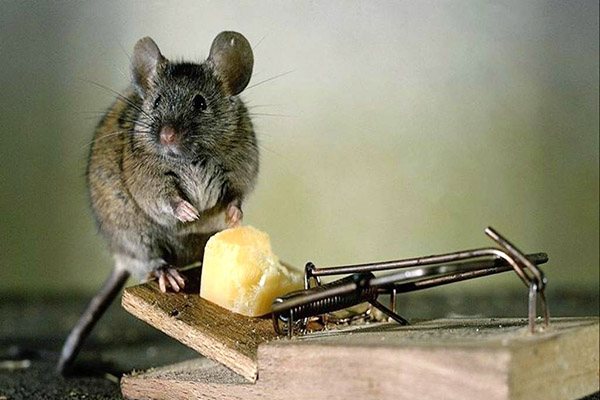

What to choose: glue or ready-made traps?
First you need to understand the question, how does the glue for mice work? The whole secret lies in a specially formulated substance that does not dry out over time and has such strong properties that the mouse sticks to it in an instant. The animal rests on its other paw, but it also sticks tightly. Often, a rat sticks with its entire body and is completely immobilized.
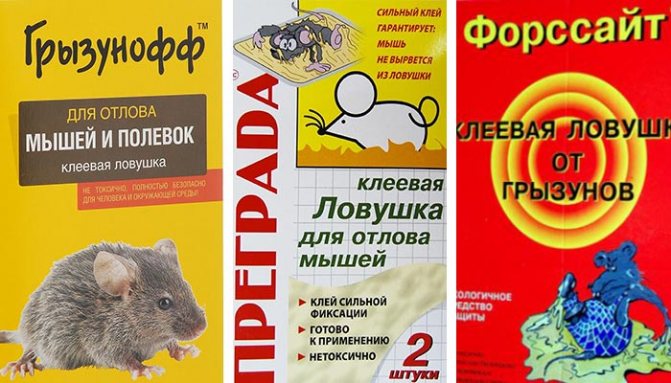

There are two forms of product: glue and ready-made traps. The first option looks like a tube with a product that needs to be applied to a cardboard, board or other surface. The trap looks like a ready-to-use plate with glue already applied at the factory, which is covered with a protective film on top. The first option is cheaper, but it makes sense to purchase it only when manufacturing a large number of devices.
The rodent dies not from the very fact of sticking, but more often from hunger and thirst. This will take several days. So if a person finds an animal stuck to a mouse trap, then the mouse will need to be killed, thrown into the trash can, or somehow disposed of. Remember that a corpse smells extremely unpleasant, so you must throw it out while still alive. Actually, these are all the rules regarding how to use glue for mice.
Poison bait
Distinguish between bait-delicacies (for a trap, lure into live traps and electric traps) and poisoned baits. For a particular type, you need to choose the right products. So, the base for the poisonous filling must be mixed with the active substance until smooth.
The bases for the preparation of mouse poison can be porridge, dough, mashed potatoes, flavored with sunflower or sesame oil. Toxins are mixed with them - Krysid, Zoocoumarin, Ratindan.
Also, the food base can be beer (mice love it very much, and rats will not pass by), raw fish or minced meat, boiled egg (finely chopped).
The stronger the base of the poisonous bait smells, the more reliably it masks the smell of the toxic substance. However, beer requires the use of additional containers (bowls), which is not very convenient. Therefore, the number one basis for the manufacture of poison will be raw minced meat. In second place are cereals and mashed potatoes seasoned with sesame oil.
A poisonous agent is mixed into the base in doses corresponding to the instructions. The finished poison is placed in a trap, liquid - in a saucer.
Work on the preparation of the poisonous bait should be in thick rubber gloves. This is necessary not only to protect the hands, but also to prevent the human smell on the bait (one of the main mistakes in the fight against rodents).
Of course, it is much easier and safer to buy ready-made mouse bait in a specialty store than to mess with homemade poisons. The assortment is varied: granules, poisonous grain, dough briquettes. There are ready-made poisons for rats and mice.
It remains only to fill the traps with poison.
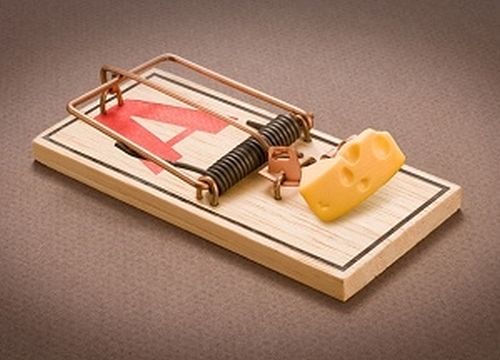

Poison baits are a good way to catch and punish pests, but not ideal. Because, nevertheless, the risk is not excluded that the dying rodent will go deep into its shelter and die there with the emission of a corpse smell afterwards.
Safety precautions when handling adhesive
The glue from rats, mice and insects is considered safe for the human body. However, during its use, certain rules must be adhered to.
These include:
- Before starting work on making a homemade rodent trap, you must wear rubber gloves.
- Use a brush or sponge to apply the adhesive. Do not touch the glue with your hands.
- Traps should be set where children or pets cannot reach them.
- After completing work, rinse your hands thoroughly under running water.
- To wipe the glue from the skin, you can use gasoline, acetone.
Before applying the adhesive, it is necessary to assess its condition. It should not have unnatural discoloration or dry out.
What baits can be used
Today, as a bait for rodents "they put not only" food from the table ", but also lure the animals with various flavors and aromatic additives. You can buy them in specialized stores, where mousetraps are also sold. What is better to put in a mousetrap?
Products
Foods put as a "treat" should have a pleasant smell, which would cause salivation in parasites. It is best to put:
- raw minced meat with onions;
- smoked cheese or fish;
- sausage;
- baked goods;
- wheat grain;
- unrefined vegetable oil;
- smoked or salted lard.


The aroma of these products reaches far away and can lure the victim into a trap for a short time.
You will have to wait much longer for a rodent if you place it in a mousetrap:
- dry cheese or baked goods;
- cheap sausages;
- spoiled foods;
- fruits;
- sweets.
If within a few days the rodent does not come for a treat, it should be replaced with a fresh one!
Flavors
Popular among the population are flavorings that can be purchased in specialized stores. They have a bright aroma that can cause salivation in rodents, which cannot be said about the taste. They can be placed in mousetraps separately or with food.
Mice cannot stand strong chemical odors, so you should not set traps next to strongly odorous compounds - gasoline, solvent, etc.
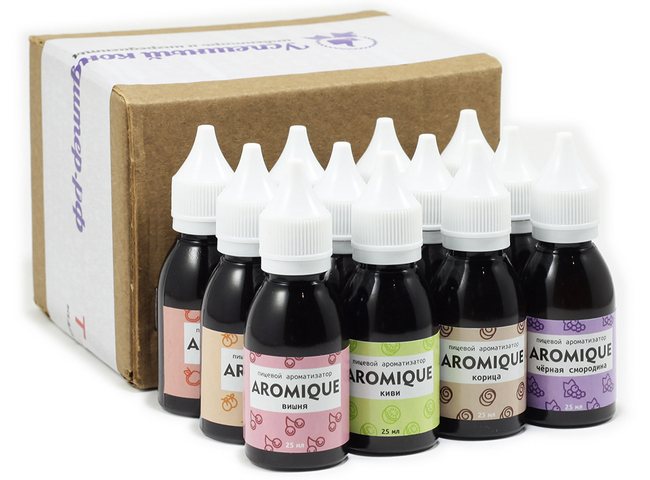

You don't need big tricks to get mice out of the house! All you need is a good mousetrap and the right bait. By the way, you can make both of them yourself at home!
Glue mousetraps are simpler, as everyone can make them! The use of homemade constructions implies their precise manufacturing, otherwise the bait will be eaten and the mouse will not be caught!
Mousetraps should be installed in places where there are no pets and children. Otherwise, not only rodents can get there, but also households, which no one wants.
Ready-made glue houses, containers and tapes


- An adhesive mousetrap in the form of a plastic container containing an insect-rodenticidal adhesive mass has dimensions of 55x130 mm, the package usually contains 2 pieces.
- A cardboard trap containing anti-mice glue includes flavoring additives to lure pests. Popular Alt, Clean House, etc.
- Adhesive plates or books, together with the applied substance, are usually sold in several pieces per package. An example of funds is Mr Mouse, Kotofey, etc.
- Velcro for mice - made on the basis of a folding house with a sticky layer applied inside. The main advantage of this design: there is no need to coat the cardboard yourself, the adhesive and the coated mice are inside, as a result of which they are inaccessible to children and pets.
- Mouse Sticky Tape - A wide strip of adhesive applied with bait food in the center.
Reasons for the appearance of mice
Mice try to find shelter for themselves with the onset of the first cold weather. Up to this point, they felt great on their personal plot or in the field. When the owners have harvested, the rodents have no choice but to look for places with food. In a human dwelling, mice find warmth and food. Therefore, they penetrate into apartments or private houses. First of all, mice appear in rooms where a person stores food.
They can be found everywhere: in sheds, in cellars, in granaries, in closets, in apartments, especially in the kitchen, etc. First, they get into the basements, and then they climb higher and higher through communications, right up to the last floors. It is surprising to some people how a mouse can appear on the top floor of a multi-storey building.
To determine if there is a risk of mice in the house, it is enough to pass a small test by answering questions. A positive answer "Yes" is awarded 1 point, and for an answer "No" - 0 points.
So:
- How often do unwashed dishes remain in the kitchen sink?
- How often is the dining table wiped down after a meal?
- How often is the bin emptied?
- Are bulk food stored properly?
- How much rubbish and unnecessary things are in the closets?
- Are there trash cans or food waste bins near the dwelling?
- Is there free access to water?
- Do crumbs remain on the kitchen floor?
- Are bulk food products covered?
- Are products bought for a long term?
- Are there holes near water and sewerage systems and other communications?
- Are poultry and pets kept?
TOP 7 best mouse trap baits
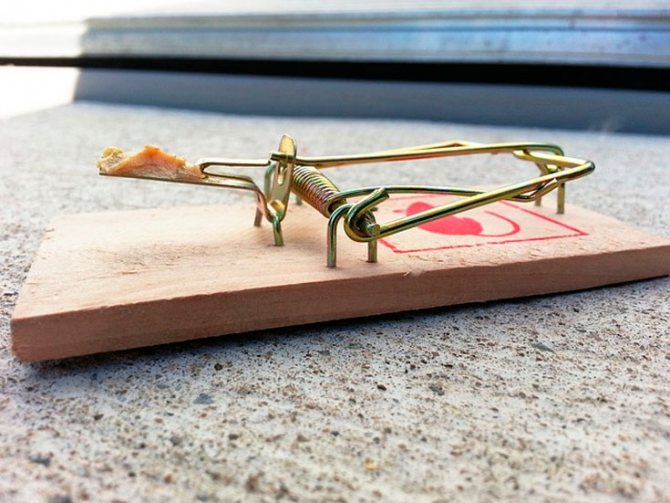

There are 7 types of foods that a rodent will not refuse. For example:
Salted or smoked bacon
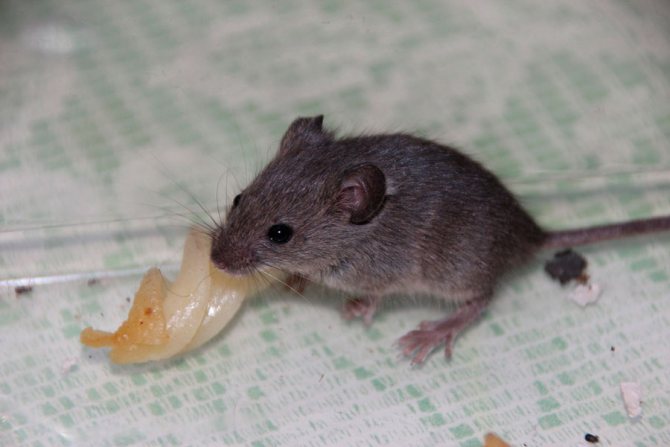

This type of bait has been tried by many generations of people. It is desirable that it be fresh lard, with a fragrant smell. Smoked bacon has similar characteristics. It is better not to use old bacon, which has a very specific aroma, as it is unlikely to interest mice.
Vegetable oil
Naturally, an unrefined product with a pleasant aroma is suitable for these purposes. It is enough to take a crust of bread and moisten it with vegetable oil, and then use it as directed.
Grain and baked goods
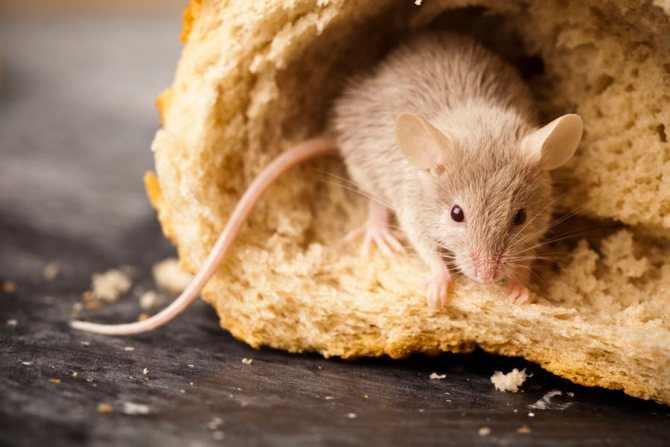

Fresh baked goods that include whole grains or bran are great for gray aggressors. Moistening a crust of bread with sunflower oil will attract pests like mice. The effect can be increased by treating cereals with rat poison.
Cold smoked fish
This product is like a magnet, attracts gray aggressors. Naturally, you need to take only a high-quality product. If you use rotten, unusable fish, then the side of the mice will bypass such a trap.
Sausage
It also attracts mice, since they contain enhancers of smell and taste. Despite the fact that sausages are literally stuffed with chemicals, they can serve as good bait. Of course, it is better to use homemade sausage, where there are no chemical components.
Cheese
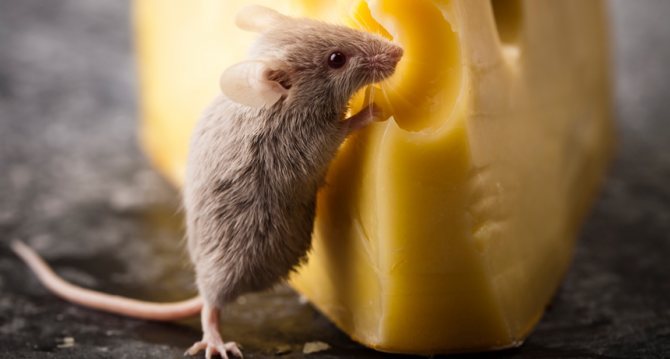

It is believed that cheese is a favorite treat for mice and rats. Nobody can prove it or disprove it. But cheese, in any form, especially smoked cheese, can serve as an excellent bait. In any case, this myth can be refuted or proven.
Raw minced meat with onions
This method is more suitable for catching rats. Of course, a mouse is unlikely to refuse such a delicacy, so such a bait works flawlessly. You can add a little rat poison to the mixture of ground meat and onions, so as not to upset the balance of tastes. For 10 parts of minced meat, at least 2 parts of onion should be taken, but more should not be taken, so as not to upset the balance of aromas.
General rules for the use of glue for mice and rats
Frequent difficulties when using an adhesive liquid are due to the fact that not everyone knows how to apply it correctly, in what volume and on what surface.
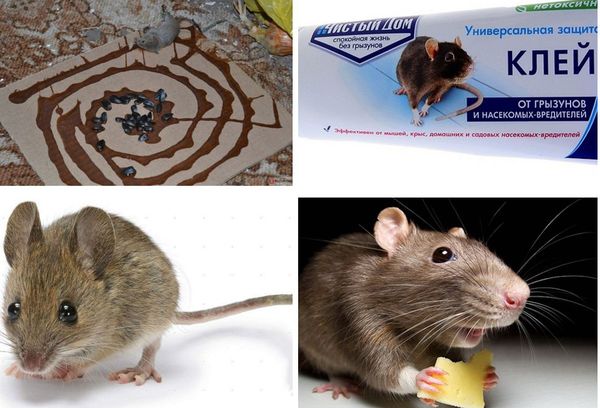

We recommend that you proceed as follows:
- It is imperative to work with glue for rats with gloves, since the suspension is poorly washed from hands. Do not touch the fabric upholstery of furniture, wallpaper, soft surfaces, since the drug is not washed off from them.
- In non-residential premises, glue is applied in the form of stripes with a distance of 1-2 m between them.
- To catch a rat, the adhesive liquid must be applied to wooden dies, which are then fixed to the floor with nails or screws, since the rat's strength is such that it can easily move with the trap.
- To catch small rodents, the slurry is applied to any smooth surface, be it ceramic tiles, glass or plastic. It is convenient to use a sponge or brush to spread the surface, evenly distributing the product.
- To catch pests in the garden, plywood or thick cardboard is used (for example, packaging from equipment).Squares are cut with a side of 50 cm or more, based on the area to be treated, the traps are placed at intervals of 2-3 m.
Advice! To increase the effectiveness of sticky mousetraps, a flavoring bait should be used along with the drug. It is recommended to stick sesame grains, bread crumbs dipped in sesame oil on the glue row, or spread slices of sausage or bacon.

